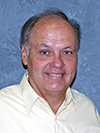Media advisory: weather modification - the state of the science
Press Briefing and National Teleconference: Tuesday, April 22, 2008, 10 a.m. (MDT)
Apr 21, 2008 - by Staff
Apr 21, 2008 - by Staff
Weather Modification Media Advisory
WESTMINSTER, CO—Commercial operators, governments, and academic researchers worldwide are engaging in cloud seeding and other weather modification projects to try to influence local conditions. But how effective are these programs?
Three of the nation's leading weather modification scientists will take part in a press briefing on April 22 in Westminster, Colorado, to discuss the state of the science. They will provide an update on efforts to build up wintertime snowpack in the western United States, weaken or deflect hurricanes, bring more rain to drought-stricken regions around the world, and influence the weather during the Beijing Olympics this summer. The scientists also will talk about the inadvertent impacts of human activities on the weather.
The briefing will be held in conjunction with an international symposium, also in Westminster, on planned and inadvertent weather modification. The April 21-25 symposium is sponsored by the American Meteorological Society (AMS) and the Weather Modification Association (WMA).
The joint press briefing will be presented by the National Center for Atmospheric Research (NCAR), AMS, and the National Oceanic and Atmospheric Administration (NOAA), along with the Desert Research Institute (DRI).

NCAR scientist and lead researcher of NCAR’s international weather modification programs
One of the world's leading experts on weather modification, Bruintjes has helped design cloud seeding and other weather modification programs on every continent except Antarctica. His work focuses primarily on attempts to enhance rainfall in arid and semi-arid regions of the world, including ongoing projects in Wyoming, Australia, Turkey, the Middle East, and West Africa. He has also consulted with Chinese experts about their programs in rainfall enhancement and prevention. In addition to evaluating various cloud seeding technologies, Bruintjes researches inadvertent weather modification, including the effects of smoke and pollution on clouds and rainfall.

Senior research scientist for NOAA's Earth System Research Laboratory and the Cooperative Institute for Research in Environmental Sciences
Golden chairs the AMS Committee on Planned and Inadvertent Weather Modification. He was the director of NOAA’s Atmospheric Modification Program from 1991 to 1995. He has testified before Congress about legislation to fund a federal program in weather modification research and technology transfer. An AMS fellow, Golden is a renowned international expert on hurricanes, tornadoes, and waterspouts.

Desert Research Institute scientist and director of Nevada's wintertime cloud seeding program
Huggins has researched wintertime weather modification for the past 29 years. He has studied the physical effects of both airborne and ground-based cloud seeding on winter storm clouds, and produced several publications documenting the effects of seeding from cloud to ground. Huggins has worked as a researcher on U.S. Bureau of Reclamation and NOAA-sponsored weather modification projects. Most recently his work has evaluated weather modification in Nevada, looking at the impacts of snowfall enhancement on streamflow.